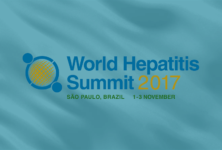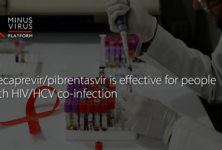Around one in six young and middle-aged HIV-positive men doing well on antiretroviral therapy (ART) had low testosterone levels, French investigators report in the online edition of AIDS. Overall, 12% of the sample had low testosterone, or male hypogonadism. Risk factors were longer duration of ART and body fat of 19% or over. Prevalence of hypogonadism was twice as high as that seen in similarly aged men in the general population.
Low testosterone can increase the risk of several health problems, including osteoporosis, erectile dysfunction/decreased libido, reduced lean body mass/muscle strength, depression and metabolic disorders. In the general population, prevalence of male hypogonadism increases with age.
Research conducted before effective ART was introduced showed that over a third of men with AIDS had low total testosterone (TT) levels. This was attributed to testicular dysfunction caused by opportunistic infections, cancers, HIV-related wasting and immune disorders.
However, little is known about the prevalence and risk factors of male hypogonadism in the modern ART era.
French investigators therefore designed a prospective cross-sectional study involving 113 HIV-positive men. All were aged less than 50 years, were taking ART and had a viral load below 50 copies/ml. Individuals were diagnosed with male hypogonadism if they had free testosterone below 70 pg/ml. Several parameters were analysed to determine the risk factors for hypogonadism.
The median age was 46 years and the median time since HIV diagnosis was six years. Average CD4 cell count was normal (median 627 cells/mm3).
Both free and total testosterone levels were measured. Median values were 99 pg/ml and 528 ng/dl, respectively. Median body mass index (BMI) and waist/hip circumference were 23 and 0.91, respectively.
Bone disorders were highly prevalent. Based on lumbar T-score, 42% of men were osteopenic and 11% had osteoporosis; prevalence increased when diagnosis was based on femoral T-score, with 58% osteopenic and 22% osteoporotic.
As regards ART, most men (46%) were taking a NNRTI, with 39% treated with a protease inhibitor and 12% an integrase inhibitor.
Low free testosterone was present in 12.4% of individuals, but only 4% had low total testosterone.
“The 12.4% prevalence of male hypogonadism found here is twice as high as that reported in the general population of the same age and similar to values reported in the general population of older men,” write the authors. “One noteworthy aspect of this study is the use of a free testosterone assay. Indeed, more than half of the hypogonadal patients would have gone undiagnosed if only total testosterone had been measured.”
Median age was significantly older in individuals with male hypogonadism compared to those with normal testosterone (46 vs 41 years, p = 0.03). Prevalence of osteoporosis was significantly higher among men with low free testosterone (15% vs 10%, p = 0.03). Erectile dysfunction, poorer quality of life and depression were not significantly more common in men with low free testosterone, although 71% of men with low free testosterone and 54% of men with normal testosterone levels reported serious erectile dysfunction.
After controlling for potential confounders, two main factors were associated with male hypogonadism: longer duration of ART (over vs less than five years; aOR = 8.54, 95% CI 1.7-42.87, p = 0.01) and increased body fat (body fat percentage over vs less than 19; aOR = 6.41; 95% CI 1.3-32.6, p = 0.03). A body fat percentage of 18-24% is considered to be average and 25% or above obese. Only men with a high level of fitness or who engage in athletic training are likely to have a body fat percentage below 18.
Although the association was non-significant, multivariate analysis also found a trend towards a higher risk of hypogonadism in men with lower femoral T-scores (aOR 2.77, CI 0.86-8.88, p = 0.09).
Therapy with an integrase inhibitor (aOR = 17.03; 95% CI 2.2-129.6, p < 0.01) was also a risk factor, a finding which surprised the investigators. “This is the first reported correlation between hypogonadism and any class of antiretrovirals,” they note.
“Male hypogonadism is thus frequent in young/middle-aged men on effective ART,” conclude the authors. “Two thresholds – 5 years of ART and 19% total body fat – might help to identify patients at risk. With over 80% of actively managed French patients currently receiving ART, male hypogonadism screening with a reliable assay may be important to overall care.”
The trend towards an association between low free testosterone and lower femoral T-score, together with the higher prevalence of osteopenia and osteoporosis in hypogonadal men, suggest that larger longitudinal analyses would be useful to determine whether measurement of free testosterone levels could help to identify men at risk of developing osteoporosis.
By Michael Carter
Reference
Lachâtre M et al. HIV and hypogonadism: a new challenge for young and middle-aged men on effective antiretroviral therapy. AIDS, online edition. DOI: 10.1097/QAD.0000000000001348 (2017).


 ПОИСК ПО САЙТУ
ПОИСК ПО САЙТУ  поиск по ресурсному центру
поиск по ресурсному центру 



